Upcycling Ideas: Turn Trash into Treasure
In a world increasingly aware of the environmental crisis, the concept of upcycling has emerged as a beacon of hope, creativity, and sustainability. Have you ever looked at an old piece of furniture or a pile of discarded materials and thought, "What if I could turn this into something beautiful?" Upcycling is all about transforming what many consider "trash" into "treasure." It's not just a trend; it's a lifestyle choice that promotes creativity while reducing landfill waste. By breathing new life into forgotten items, we can create unique pieces that tell a story and reflect our personal style.
Imagine walking into your home and seeing a stunning lamp made from an old wine bottle or a vibrant wall hanging crafted from fabric scraps. These aren't just decorative items; they are conversation starters that showcase your commitment to sustainability. Upcycling allows you to express your individuality while making a positive impact on the planet. The beauty of upcycling lies in its accessibility. You don’t need to be a master craftsman or have an art degree; all you need is a little imagination and a willingness to experiment. So, are you ready to dive into the world of upcycling and discover how to turn your trash into treasure?
Let’s explore some innovative ways to transform waste materials into valuable items. Whether you're looking to revamp your home decor, refresh your wardrobe, or engage your kids in creative projects, upcycling offers endless possibilities. By embracing this practice, you not only enhance your creativity but also contribute to a more sustainable future. So grab your tools, roll up your sleeves, and let’s get started on this exciting journey of turning the ordinary into the extraordinary!
- What is upcycling? Upcycling is the process of transforming waste materials or unwanted products into new materials or products of better quality or environmental value.
- Why should I consider upcycling? Upcycling helps reduce waste, promotes creativity, and allows you to create unique items that reflect your personal style.
- Do I need special tools for upcycling? While some projects may require specific tools, many upcycling ideas can be accomplished with basic household items and tools.
- Can upcycling save me money? Yes! Upcycling can be a cost-effective way to furnish your home or refresh your wardrobe without spending a lot of money.
- Is upcycling suitable for kids? Absolutely! Upcycling projects can be fun and educational for children, teaching them about sustainability while fostering their creativity.
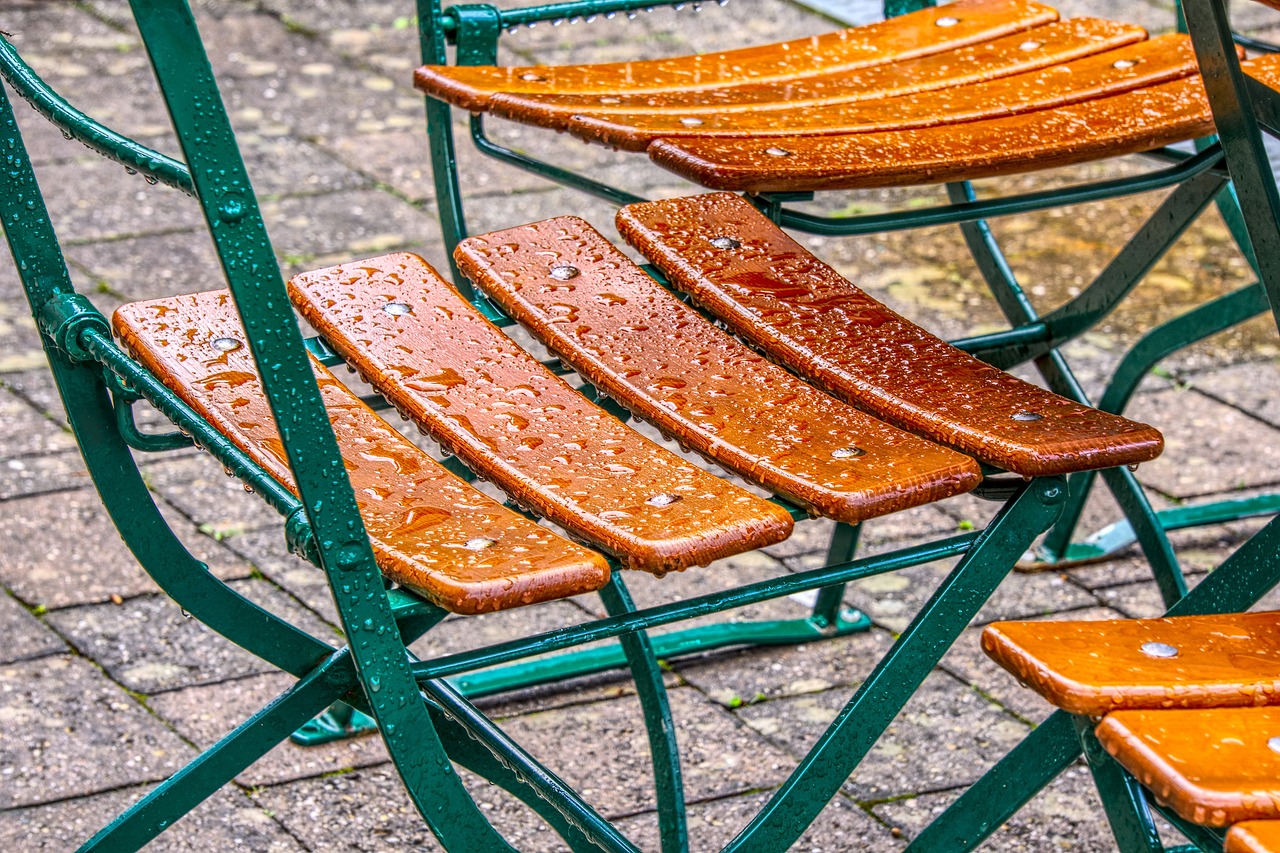
Creative Furniture Transformations
Have you ever looked at an old piece of furniture and thought, “This could use a little love?” Well, you’re in luck! Upcycling furniture is a fantastic way to breathe new life into items that might otherwise end up in a landfill. Not only does it help reduce waste, but it also allows you to express your creativity and style. Imagine turning that worn-out chair into a stunning accent piece that draws the eye in any room. Sounds fun, right? Let’s dive into some innovative techniques that can transform your outdated furniture into stylish treasures!
One of the simplest ways to revamp furniture is through painting. A fresh coat of paint can completely change the look and feel of a piece. Whether you opt for a bold color to make a statement or a soft pastel for a more subtle touch, the choice is yours. For a more textured look, consider using chalk paint or adding a distressed finish. You can even take it a step further by using stencils to add intricate designs, making your furniture truly one-of-a-kind.
Another popular technique is reupholstering. If you have a chair or sofa that’s still structurally sound but has seen better days, reupholstering can work wonders. Choose a fabric that complements your decor and gives a fresh vibe. This project can be as simple or as complicated as you want, depending on your skill level. For those who are new to sewing, there are plenty of tutorials available online that guide you through the process step-by-step. Plus, it’s a fantastic way to personalize your space!
For those who love a good DIY project, consider combining two or more pieces of furniture. For example, you can take an old dresser and turn it into a unique TV stand. By removing some drawers and adding a fresh coat of paint, you can create a functional and stylish piece that fits your space perfectly. This type of transformation not only maximizes functionality but also showcases your creativity.
Let’s not forget about the power of hardware! Sometimes, all it takes to transform a piece of furniture is a simple change in knobs or handles. Swapping out the old hardware for something more modern or unique can instantly elevate the look of your furniture. It’s a small change that can have a big impact!
In addition to these techniques, there are countless other ways to get creative with furniture upcycling. Here are a few ideas to spark your imagination:
- Decoupage: Use old magazines, wrapping paper, or fabric to decoupage surfaces for a fun and artsy look.
- Staining: If you have wooden furniture, consider refinishing it with a new stain to enhance its natural beauty.
- Repurposing: Turn an old ladder into a bookshelf, or use wooden crates as stylish storage solutions.
As you can see, the possibilities are endless when it comes to creative furniture transformations. Not only do these projects allow you to showcase your personal style, but they also contribute to a more sustainable lifestyle. So, gather your materials, unleash your creativity, and let’s turn that trash into treasure!
Q: What tools do I need for furniture upcycling?
A: Basic tools include a paintbrush, sandpaper, a staple gun, and a sewing machine if you’re reupholstering. Depending on your project, you might also need a drill, saw, or other specialized tools.
Q: Can I upcycle furniture if I have no prior experience?
A: Absolutely! Many upcycling projects are beginner-friendly. Start with simple tasks like painting or changing hardware, and gradually work your way up to more complex projects.
Q: Where can I find old furniture to upcycle?
A: Check local thrift stores, garage sales, or online marketplaces. You'd be surprised at the gems you can find!
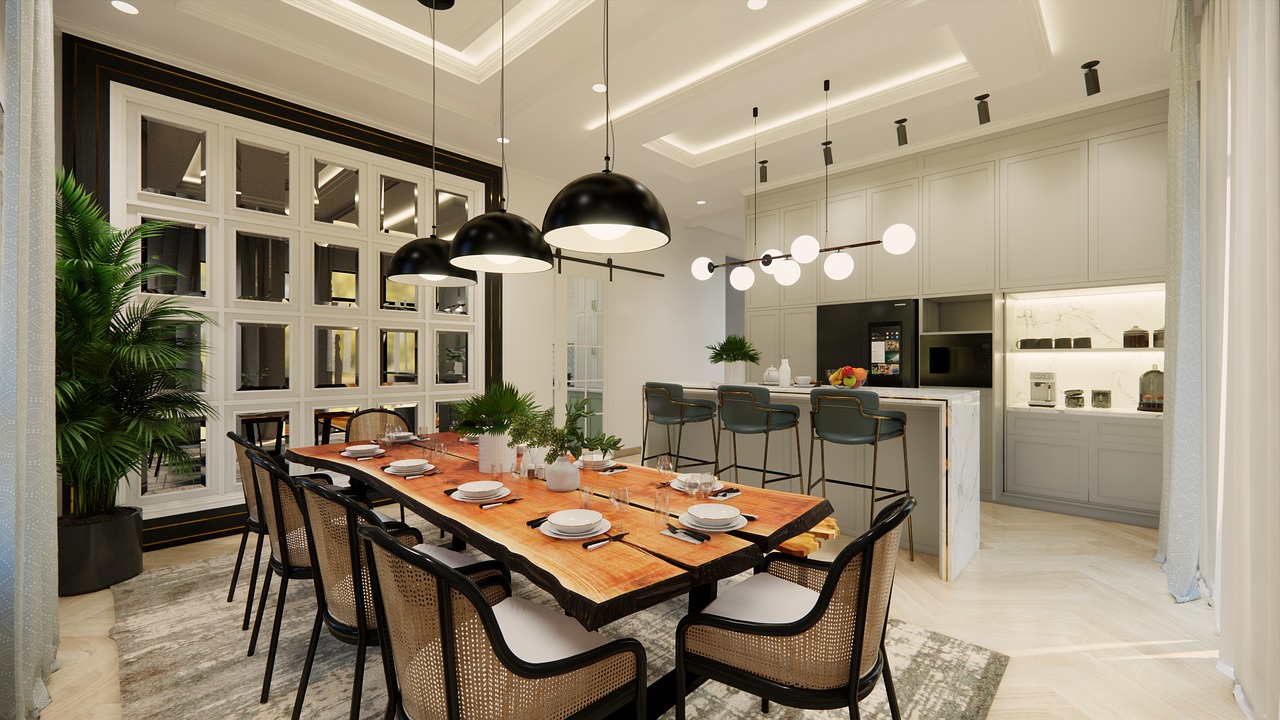
DIY Home Decor Projects
When it comes to home decor, why settle for the ordinary when you can make something extraordinary? offer a fantastic opportunity to unleash your creativity while also being kind to the environment. By utilizing discarded materials, you can craft stunning decorations that not only enhance your living space but also tell a story. Imagine transforming an old wooden pallet into a rustic coffee table or using glass jars as chic candle holders. The possibilities are endless!
One of the most exciting aspects of DIY projects is that they allow you to showcase your personality. Each piece you create can reflect your style, whether it’s bohemian, modern, or vintage. Plus, there's a certain satisfaction that comes from saying, "I made that!" when guests admire your handiwork. Before diving into your next project, consider what materials you already have at home. You might be surprised by how many treasures are hiding in plain sight!
Creating beautiful wall art is a fantastic way to breathe new life into old items. For instance, take those dusty old frames that have been sitting in your attic. With a little paint and creativity, you can transform them into stunning displays for your favorite photos or artworks. Imagine a gallery wall filled with vibrant colors and cherished memories, all crafted from materials that would have otherwise ended up in the landfill.
Another fun idea is to use newspapers or fabric scraps to create unique collages. This project not only minimizes waste but also allows you to experiment with different textures and patterns. You can even involve your kids in this project, making it a fun family activity. As you cut, glue, and arrange, you’ll be surprised at how your creativity flows and how satisfying it is to see your vision come to life.
Transforming old frames into unique displays is an excellent way to repurpose materials while adding a touch of nostalgia to your home. You can paint the frames in vibrant colors or keep them rustic for a more vintage feel. Once your frames are ready, fill them with your favorite photos, quotes, or even small pieces of art created by your children. This project not only beautifies your space but also creates a personal gallery that tells your family's story.
If you have leftover fabric scraps lying around, don’t toss them! Instead, turn them into vibrant wall hangings or collages. This project is perfect for showcasing your creativity while minimizing textile waste. You can create a patchwork of colors and patterns that adds warmth and character to any room. Hang your fabric creations in your living room or bedroom to instantly elevate the decor.
Let’s not forget about the green thumb in you! Upcycling everyday objects like tin cans or glass jars into charming planters is not only eco-friendly but also a fun way to bring life into your home. Imagine a row of colorful tin can planters filled with herbs on your kitchen windowsill or a glass jar bursting with vibrant flowers on your dining table. These small touches can make a significant impact, turning any space into a lively oasis.
So, why not gather some old cans and jars, paint them in your favorite colors, and fill them with plants? You’ll not only be saving money but also contributing to a more sustainable lifestyle. Remember, every little effort counts in reducing waste and making your home a more beautiful place!
- What materials can I use for DIY home decor projects? You can use a variety of materials such as old furniture, glass jars, fabric scraps, wooden pallets, and even discarded items like tin cans and newspapers.
- How do I start a DIY home decor project? Begin by gathering materials you already have at home. Think about what you want to create and research some ideas. Once you have a plan, gather your tools and start crafting!
- Are DIY projects cost-effective? Absolutely! DIY projects can save you a lot of money compared to buying new decor. Plus, you get the added benefit of creating something unique.
- Can kids participate in DIY projects? Yes! Many DIY projects can be adapted for children, making them a fun and educational activity. Just ensure you supervise them, especially when using tools or paints.
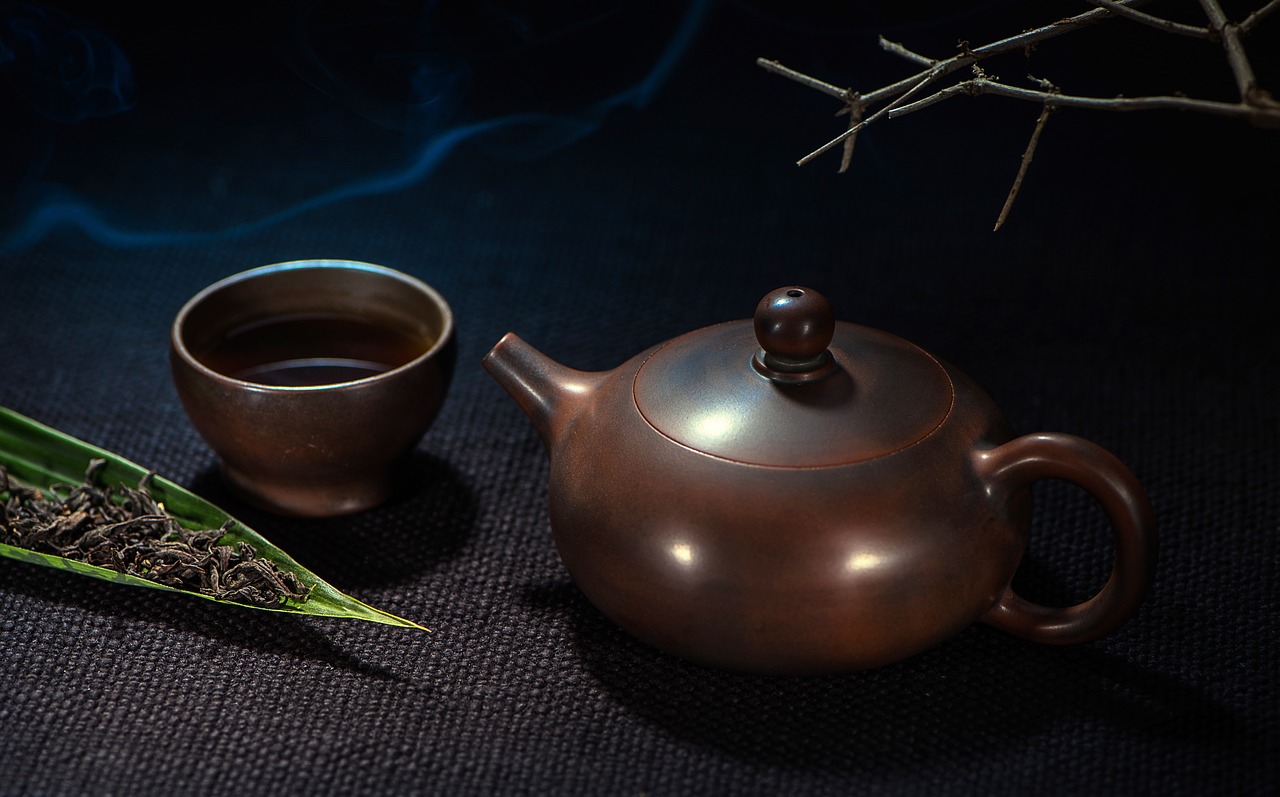
Upcycled Wall Art
Creating is not just a fun and creative project; it's also a fantastic way to express your personality while being environmentally conscious. Imagine transforming a stack of old newspapers or a collection of discarded picture frames into stunning pieces that tell a story! This approach not only helps you declutter your space but also adds a unique flair to your home decor. Plus, it’s a great conversation starter when guests come over.
To get started, gather some materials you might have lying around. Here are some ideas:
- Old frames: These can be painted or left as is for a rustic look.
- Newspapers or magazines: Perfect for collage-style art.
- Fabric scraps: Use them to create textured wall hangings.
- Wooden pallets: Ideal for creating a rustic backdrop.
Once you have your materials, the possibilities are endless! You can create a collage by cutting out images or text from magazines and arranging them in a frame. This not only gives your wall a pop of color but also allows you to express your thoughts and feelings through art. Alternatively, consider using fabric scraps to create a vibrant tapestry that can serve as a focal point in any room. The texture and colors of the fabric can bring warmth and depth to your space.
Another exciting idea is to repurpose old frames. Instead of letting them collect dust, why not turn them into shadow boxes? Fill them with small mementos, photos, or even dried flowers. This not only repurposes the frame but also creates a beautiful display that holds sentimental value. You can even mix and match different frame styles and colors for an eclectic gallery wall that showcases your creativity.
For those who love a challenge, consider creating a piece that incorporates multiple techniques. For example, you could combine painted wood with fabric scraps and framed photos to create a mixed-media masterpiece. This type of project not only enhances your artistic skills but also results in a truly unique piece of art that reflects your personality.
In the end, upcycled wall art is all about letting your imagination run wild. It's a chance to create something beautiful from what would otherwise be waste. So, gather your materials, unleash your creativity, and watch as your walls transform into a gallery of your own making!
Q: What materials can I use for upcycled wall art?
A: You can use a variety of materials such as old picture frames, newspapers, magazines, fabric scraps, wooden pallets, and even items like bottle caps or buttons.
Q: Do I need special tools to create upcycled wall art?
A: While basic crafting supplies like scissors, glue, and paint are helpful, you don’t need special tools. Most projects can be done with items you already have at home.
Q: Can I sell my upcycled wall art?
A: Absolutely! Many people appreciate handmade, eco-friendly art. You can sell your creations at local craft fairs, online marketplaces, or social media platforms.
Q: How can I ensure my upcycled art lasts?
A: Use quality materials and consider sealing your artwork with a protective finish, especially if it’s made from paper or fabric to prevent wear and tear.
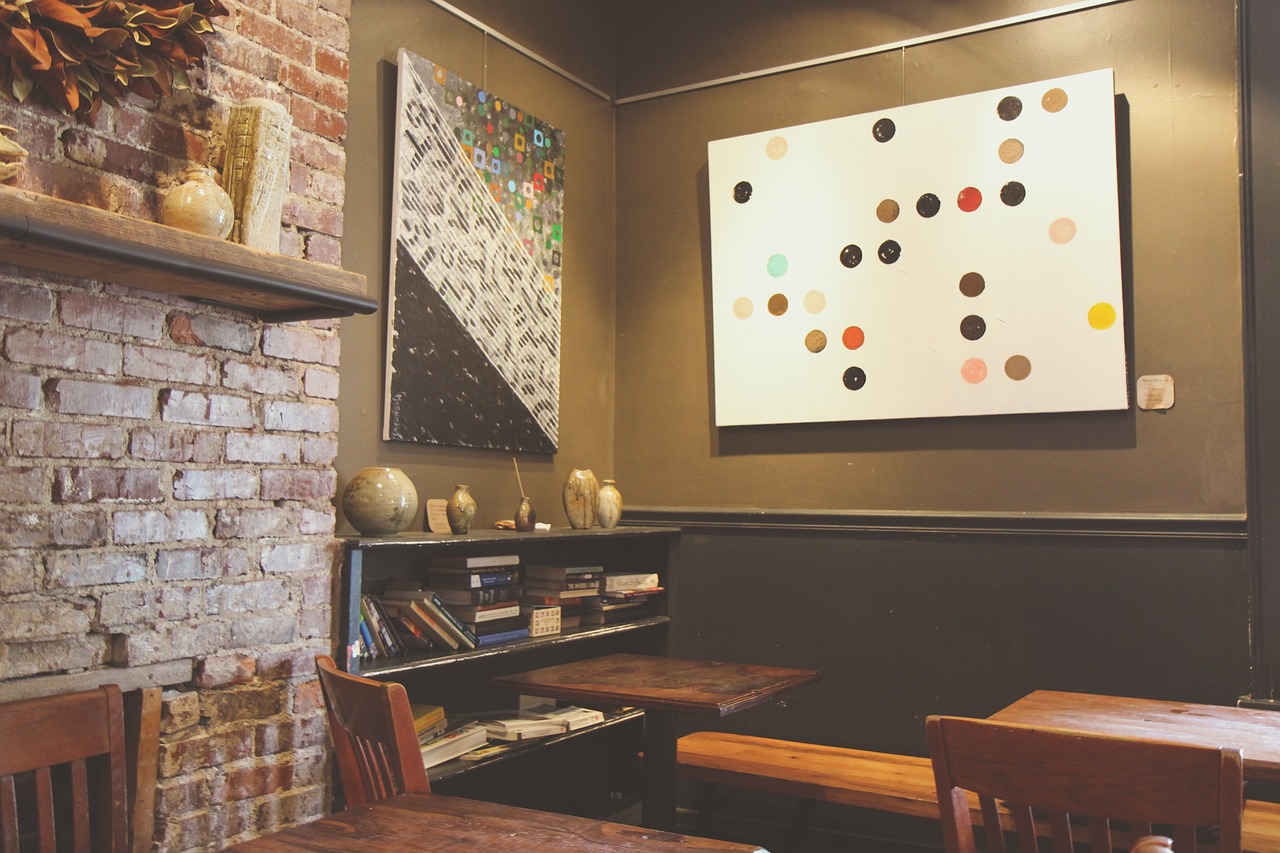
Framed Memories
Transforming old frames into unique displays for your favorite photos or artwork is not just a creative project; it’s a journey down memory lane! Imagine dusting off that vintage frame you found at a garage sale or inherited from your grandmother. With a little imagination and some simple techniques, you can breathe new life into these forgotten treasures. Not only does this project repurpose materials, but it also creates a nostalgic atmosphere that adds warmth and character to your home.
To get started, gather your materials. You’ll need:
- Old frames (wooden or metal)
- Paint or wood stain
- Sandpaper (if needed)
- Photos or artwork that bring you joy
- Optional: Decorative elements like ribbons or embellishments
First, consider the style you want to achieve. Are you going for a rustic farmhouse vibe or a sleek modern look? If you’re leaning towards rustic, a distressed paint finish can create that charming worn appearance. For a more modern aesthetic, a solid coat of bold color can make your frame pop!
Once you’ve decided on your design, start by cleaning the frames thoroughly. If they’re wooden, you might want to sand them down a bit to ensure the paint adheres well. After that, apply your chosen paint or stain, allowing it to dry completely. This is where the magic happens! You’ll see your old frame transform into a stunning piece of art.
After the frames are ready, it’s time to fill them with memories. Choose photos that evoke emotion—maybe a family vacation, a birthday celebration, or a candid moment with friends. You can also use artwork created by your children or yourself, making it even more personal. Arrange the frames in a gallery wall style or place them on a shelf to create a charming display.
Not only does this project allow you to showcase your favorite memories, but it also serves as a conversation starter for guests. Imagine them admiring your handiwork and asking about the stories behind the photos. It’s a beautiful way to keep your cherished moments alive and visible in your home.
In conclusion, upcycling old frames into displays of framed memories is a fantastic way to embrace creativity while honoring the past. Each frame tells a story, and with a little effort, you can create a stunning visual narrative that reflects your unique journey. So, gather your materials and let your creativity flow—your walls are waiting for a touch of nostalgia!
Q: What types of frames are best for upcycling?
A: Almost any frame can be upcycled! Look for wooden or metal frames in various sizes. Thrift stores and garage sales are great places to find unique options.
Q: Can I use any type of paint for upcycling frames?
A: Yes! Acrylic paint works well for most frames, but if you want a more durable finish, consider using spray paint or chalk paint.
Q: How do I hang the frames once they are ready?
A: You can use picture-hanging hardware or adhesive strips, depending on the weight of the frame and your wall type. Make sure to measure and level them for a polished look!
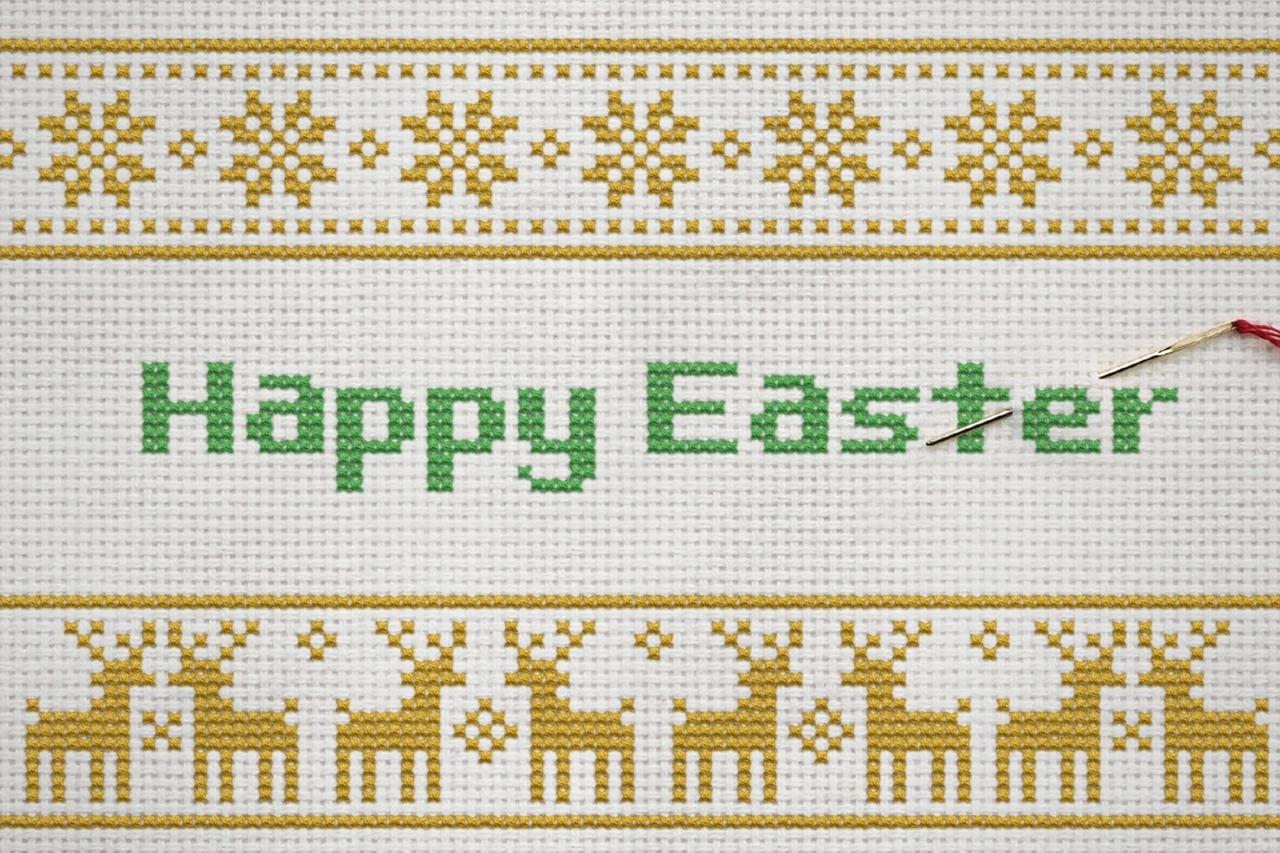
Fabric Scrap Creations
Have you ever looked at a pile of fabric scraps and thought, "What on earth can I do with these?" Well, let me tell you, those little pieces of fabric are a goldmine for creativity! Instead of tossing them in the trash, you can transform them into stunning wall hangings, vibrant collages, or even practical items for your home. Upcycling fabric scraps not only showcases your artistic flair but also significantly reduces textile waste that would otherwise end up in landfills. It's like giving a second life to something that was once deemed useless!
One of the most exciting aspects of working with fabric scraps is the endless possibilities they offer. You can create a beautiful fabric collage that tells a story or reflects your personality. Imagine piecing together different textures, colors, and patterns to create a unique art piece for your wall. This kind of project is not only fun but also allows you to express yourself in a way that is entirely your own. Plus, every time you look at it, you’ll be reminded of your creativity and resourcefulness!
Another fantastic idea is to craft colorful wall hangings. By simply sewing or gluing together your scraps, you can create a beautiful tapestry that adds warmth and character to any room. Think of it as a patchwork of memories, where each fabric piece holds a story or a sentiment. Hang it in your living room, bedroom, or even your child's nursery for a personal touch that sparks conversation and admiration.
If you're feeling a bit more adventurous, why not try your hand at making fabric coasters? These practical items are perfect for protecting your surfaces while adding a splash of color to your decor. Simply layer your fabric scraps, sew them together, and voilà! You have a set of unique coasters that are not only functional but also a fantastic conversation starter.
In addition to wall art and coasters, you can create gift wraps from fabric scraps. It's a beautiful way to present gifts, and it adds a personal touch that store-bought wrapping paper just can't compete with. Your friends and family will appreciate the effort and creativity behind the wrapping, making the gift even more special. Just imagine the delight on their faces when they unwrap a gift wrapped in a unique, handmade fabric wrap!
So, if you’re ready to dive into the world of fabric scrap creations, gather your leftover pieces, and let your imagination run wild. Whether you're making art, practical items, or unique gifts, the possibilities are truly endless. Plus, you’ll be doing your part for the planet by reducing waste and promoting sustainability. Now, isn’t that a win-win situation?
- What types of fabric can I use for upcycling projects?
You can use any fabric scraps you have on hand, including cotton, linen, felt, and even old clothing! Just ensure they are clean and in good condition. - Do I need special tools for fabric scrap creations?
While basic sewing tools like scissors, needles, and thread are helpful, you can also use glue for no-sew projects. The tools you need depend on the specific project you choose. - Can children participate in fabric scrap projects?
Absolutely! Fabric scrap projects are a great way for children to express their creativity while learning about recycling and sustainability. Just supervise them with any sharp tools. - How can I display my fabric creations?
You can hang wall art, use coasters on your coffee table, or even gift your creations to friends and family. The options for displaying your work are as creative as the projects themselves!
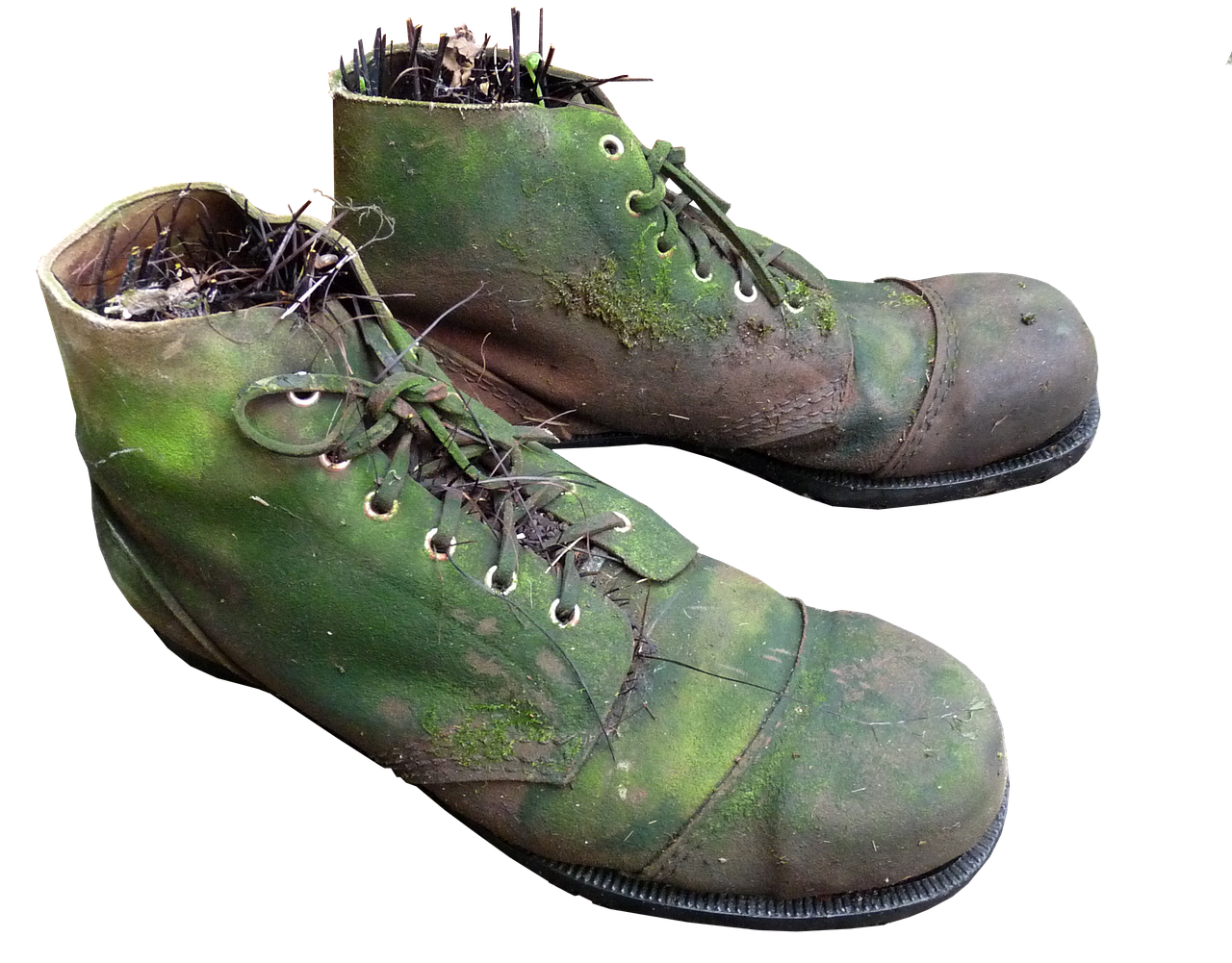
Repurposed Planters
Have you ever looked at an empty tin can or an old glass jar and thought, "This could be something beautiful"? Well, you're not alone! Repurposing everyday items into charming planters is a fantastic way to add a splash of greenery to your home while also making a positive impact on the environment. Instead of tossing those containers into the recycling bin, why not give them a second life as stylish plant holders? Not only does this practice promote a greener lifestyle, but it also allows you to showcase your creativity.
Imagine transforming a simple coffee can into a vibrant herb planter for your kitchen window. All it takes is a bit of paint, some drainage holes, and your favorite herbs! You can also get creative with glass jars—paint them in pastel colors or wrap them in twine for a rustic look. The beauty of upcycled planters is that the possibilities are endless. You can create a cohesive theme by using similar colors or styles, or you can mix and match for a more eclectic vibe. Here’s how you can get started:
- Gather Materials: Look around your home for items that would make great planters. This can include tin cans, glass jars, old teacups, or even wooden crates.
- Prepare Your Planters: Ensure your containers have adequate drainage. For tin cans, you can use a hammer and nail to create small holes at the bottom. For glass jars, consider adding stones at the bottom for drainage.
- Decorate: Use paint, washi tape, or fabric to personalize your planters. Let your imagination run wild!
- Plant Your Greens: Choose plants that suit your space. Succulents are great for beginners, while herbs like basil and mint can thrive indoors.
By using repurposed planters, you not only beautify your space but also create a unique conversation starter. Imagine your friends admiring your creativity when they see a colorful tin can sprouting fresh basil or a vintage teacup holding a delicate succulent. Upcycling not only saves money but also reduces waste, making it a win-win for both your wallet and the planet.
Plus, this is a wonderful opportunity to get the whole family involved. Children can help paint and decorate the planters, making it a fun and educational activity that teaches them about sustainability and the importance of caring for our environment. So, gather those old containers and let your creativity bloom!
Q: What types of plants can I grow in repurposed planters?
A: You can grow a variety of plants in repurposed planters, including herbs, succulents, and small flowers. Just ensure that the container is suitable for the type of plant you choose.
Q: How do I ensure proper drainage in my repurposed planters?
A: Make sure to create drainage holes at the bottom of your containers. If using a container that cannot be punctured, consider adding a layer of small stones at the bottom to facilitate drainage.
Q: Can I use any type of paint to decorate my planters?
A: It’s best to use non-toxic, water-based paints for decorating planters, especially if you’re growing edible plants. This ensures that no harmful chemicals leach into the soil.

Fashion Upcycling
Revamping your wardrobe doesn't have to mean spending a fortune at the mall. In fact, you can refresh your style while embracing sustainable practices through the exciting world of . This creative process involves taking old, unused clothing items and transforming them into trendy new pieces that reflect your personal style. Imagine turning that oversized shirt you never wear into a chic crop top or converting a pair of worn-out jeans into stylish shorts. The possibilities are endless, and the best part? You're doing your part to help the planet!
One of the most popular techniques in fashion upcycling is patchwork clothing. This method allows you to combine various fabric pieces from old garments to create something entirely unique. Not only does this technique give new life to forgotten clothes, but it also showcases your individuality. You can play with different colors and patterns, making your patchwork creation a true reflection of who you are. It’s like wearing a piece of art that tells your story!
Another exciting avenue of fashion upcycling is accessory redesign. Instead of tossing out outdated jewelry or bags, consider giving them a makeover. A simple coat of paint can transform an old handbag, while adding new charms or beads can breathe new life into your jewelry collection. This not only saves you money but also allows you to create one-of-a-kind accessories that you won’t find anywhere else. Think of it as a treasure hunt in your own closet!
In addition to these projects, fashion upcycling offers an opportunity to engage in sustainable practices. By choosing to upcycle, you're actively participating in reducing textile waste, which is a significant issue in our modern world. The fashion industry is notorious for its environmental impact, and every small step towards sustainability counts. You can even host a clothing swap with friends, where everyone brings their old clothes and exchanges them for something new-to-them. This way, you not only refresh your wardrobe but also promote a community-focused approach to fashion.
To inspire your journey into fashion upcycling, here are a few tips to get you started:
- Start small: Choose one or two items to upcycle at first.
- Gather your tools: You may need scissors, sewing supplies, and fabric glue.
- Get inspired: Browse social media platforms like Pinterest or Instagram for ideas.
- Have fun: Remember, the goal is to enjoy the creative process!
In conclusion, fashion upcycling not only allows you to express your creativity but also contributes to a more sustainable future. So, the next time you think about tossing out an old piece of clothing, consider the potential it holds. With a little imagination and some DIY spirit, you can turn your wardrobe into a treasure trove of unique and stylish pieces!
What is fashion upcycling?
Fashion upcycling is the process of taking old or unused clothing and transforming it into new, fashionable items, helping to reduce waste and promote sustainability.
How can I get started with upcycling my clothes?
Begin with simple projects like turning a shirt into a crop top or adding patches to jeans. Gather basic sewing supplies and look for inspiration online.
Is upcycling expensive?
Not at all! Upcycling is often more cost-effective than buying new clothes, as it utilizes items you already own. Plus, you can get creative with what you have!
Can I upcycle accessories too?
Absolutely! Accessories like bags and jewelry can be easily redesigned to create unique pieces. A little paint or embellishment can go a long way!

Patchwork Clothing
Have you ever looked at your closet and thought, "I have so many clothes, yet nothing to wear?" Well, it's time to change that narrative! is not just a trend; it's a fantastic way to breathe new life into your old garments while expressing your unique style. Imagine taking those once-beloved jeans that have seen better days and transforming them into a stunning patchwork jacket that turns heads. It's a win-win situation—you're reducing waste and showcasing your creativity!
So, how does one embark on this colorful journey of patchwork? First, gather your old clothes. Think about items that you no longer wear but can’t bear to part with. They might be too small, out of style, or simply not your vibe anymore. The beauty of patchwork is that it allows you to mix and match different fabrics, colors, and patterns to create something entirely new. It’s like being an artist, but instead of paint, your canvas is made of fabric!
One of the best parts about patchwork is the variety of techniques you can use. Here are a few ideas to get your creative juices flowing:
- Fraying Edges: Leave the edges of your fabric pieces raw for a bohemian vibe.
- Quilting: Create a quilt-like effect by sewing layers of fabric together, which adds texture and warmth.
- Appliqué: Sew smaller pieces onto a larger piece to create intricate designs and patterns.
To get started, you’ll need some basic sewing supplies: fabric scissors, a sewing machine (or needle and thread if you prefer hand sewing), and of course, your chosen fabrics. It’s also helpful to have a rotary cutter and mat for precise cutting. If you’re worried about your sewing skills, fear not! There are plenty of online tutorials and videos that can guide you through the process, making it accessible for everyone, regardless of experience level.
As you dive into your patchwork project, remember that the goal is to have fun and let your personality shine through. Don’t be afraid to experiment! Mix floral patterns with stripes, or denim with cotton. The beauty of patchwork is that there are no rules—only your imagination limits you. Plus, you’ll end up with a one-of-a-kind piece that tells a story, showcasing your journey in fashion and sustainability.
In addition to clothing, consider expanding your patchwork skills to accessories! You can create patchwork bags, hats, or even home décor items like cushions and quilts. The possibilities are endless, and each piece you create will not only be unique but will also contribute to a more sustainable lifestyle.
So, are you ready to dig through your closet and start patching? Remember, every stitch is a step towards a more sustainable future while allowing you to express your style. Embrace the art of patchwork clothing and turn your fashion waste into a treasure trove of creativity!
Q: What types of fabrics can I use for patchwork clothing?
A: You can use almost any fabric! Cotton, denim, linen, and even old t-shirts work well. Just ensure that the fabrics are compatible in terms of weight and care instructions.
Q: Do I need to be an expert sewer to start patchwork?
A: Not at all! Patchwork is great for beginners and experts alike. Start with simple designs and gradually try more complex techniques as you gain confidence.
Q: How do I care for my patchwork clothing?
A: Follow the care instructions for the fabrics used. Generally, it's best to wash patchwork items in cold water and air dry to maintain their shape and color.
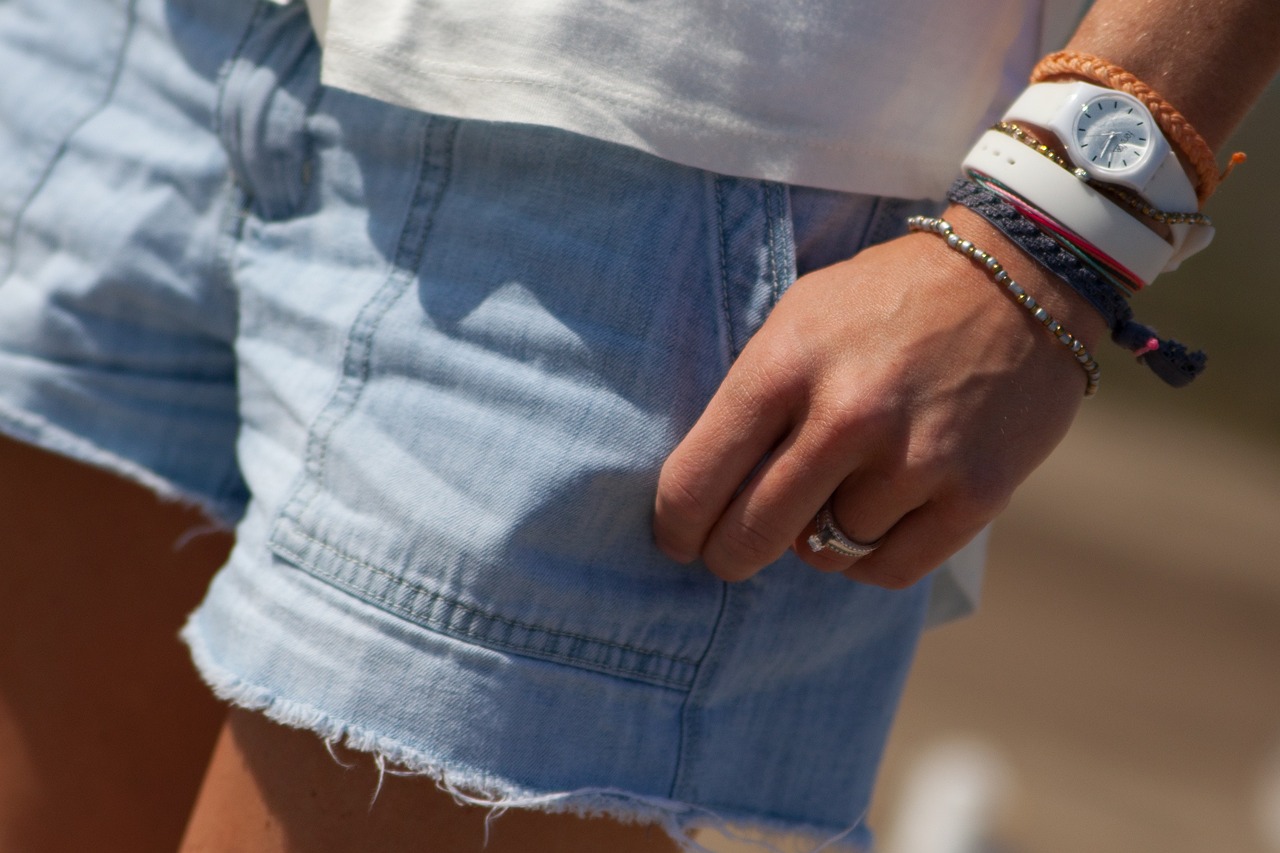
Accessory Redesign
Have you ever looked at your old accessories and thought, "What a waste!"? Well, it's time to change that mindset! Accessory redesign is not just a creative outlet; it's a chance to breathe new life into items that might otherwise sit in the back of your closet, collecting dust. Imagine transforming a pair of outdated earrings into stunning statement pieces or turning a worn-out handbag into a trendy tote. The possibilities are endless!
One of the best parts about accessory redesign is that it allows you to express your unique style while being kind to the planet. Instead of shopping for new accessories, consider what you already have. For instance, you can take an old belt and turn it into a chic bracelet or use an unused scarf as a fashionable headband. These simple changes can make a world of difference, not just for your wardrobe but also for your eco-conscious lifestyle.
Here are a few ideas to spark your creativity:
- Jewelry Revamp: Use old beads, chains, or even broken jewelry pieces to create something entirely new. A little glue and creativity can turn a broken necklace into a fabulous bracelet or a pair of earrings.
- Bag Makeover: Take an old purse and give it a fresh coat of paint or add some decorative patches. You can even switch out the straps for a completely new look!
- Hat Customization: Jazz up a plain hat with fabric flowers, pins, or even embroidery. This not only personalizes your accessory but also makes it a conversation starter!
Incorporating sustainability into your fashion choices doesn't have to be boring or tedious. In fact, it can be a thrilling adventure! You might even find yourself hosting a DIY accessory party with friends, sharing tips and techniques while having a blast. The joy of creating something unique, combined with the satisfaction of reducing waste, is an experience like no other.
So, next time you're tempted to toss out that old accessory, think twice! With a little imagination and some basic crafting supplies, you can turn your forgotten items into fabulous fashion statements. It's not just about saving money; it's about embracing a lifestyle that values creativity, sustainability, and individuality.
Q1: What materials do I need for accessory redesign?
A1: You can use various materials such as old jewelry pieces, fabric scraps, beads, paint, and even tools like pliers or scissors. The key is to be creative with what you have!
Q2: Can I redesign accessories that are not in perfect condition?
A2: Absolutely! In fact, many redesign projects focus on items that are slightly damaged or outdated. This is where your creativity shines, turning imperfections into unique features!
Q3: How can I learn more about accessory redesign techniques?
A3: There are plenty of online tutorials, videos, and crafting communities that can guide you through different techniques. Social media platforms like Pinterest and Instagram are great places to find inspiration!
Q4: Is accessory redesign suitable for all ages?
A4: Yes! Accessory redesign can be a fun activity for people of all ages. It's a great way to spend time with family and friends while fostering creativity and resourcefulness.
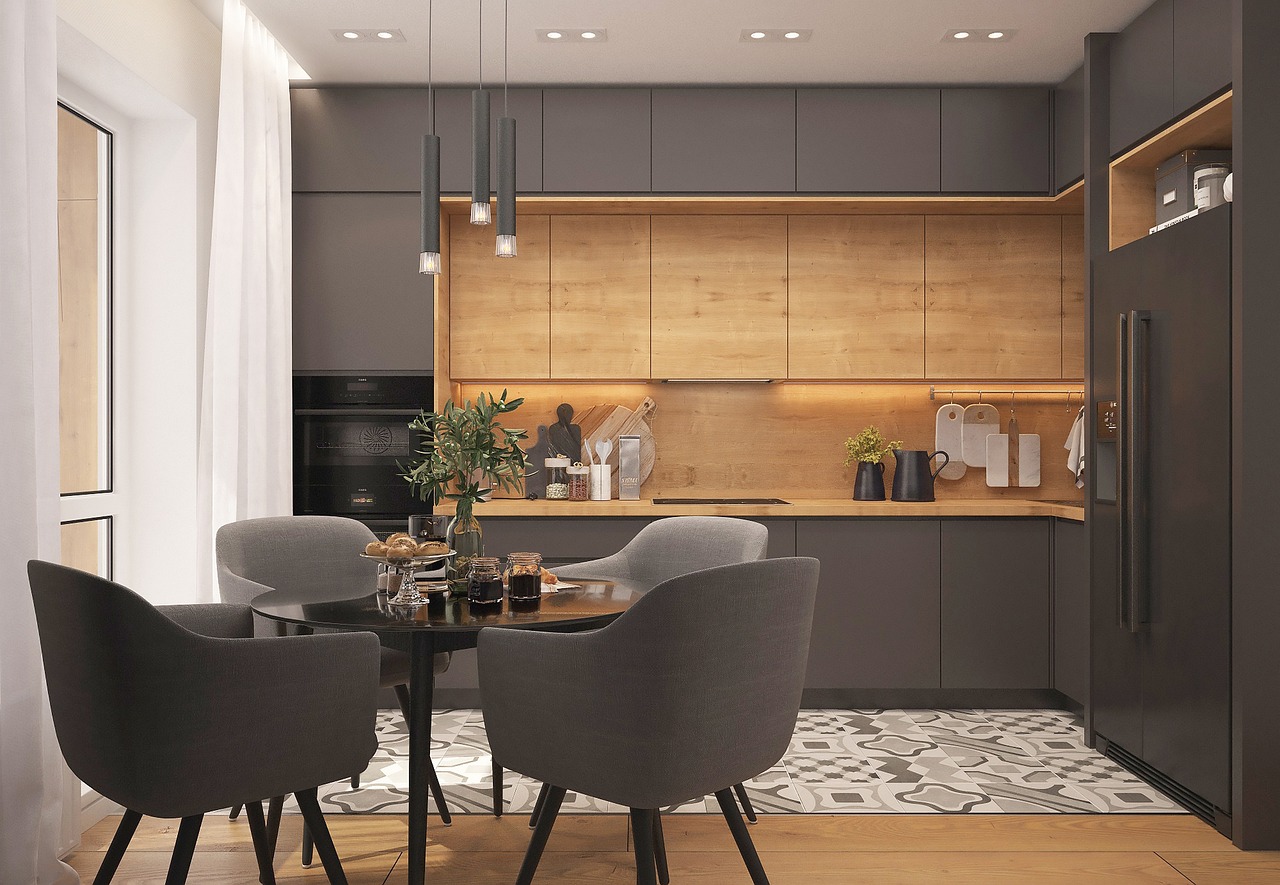
Upcycling for Kids
Engaging children in upcycling projects not only sparks their creativity but also instills a sense of responsibility towards the environment. It's a win-win! Imagine turning a mundane afternoon into an exciting adventure where your kids become little eco-warriors, transforming everyday trash into treasures. Upcycling for kids is all about using their imagination and hands to create something new and valuable from what might otherwise end up in the landfill.
One of the most delightful aspects of upcycling is that it can involve a variety of materials that are often just lying around the house. For instance, old cardboard boxes can be transformed into elaborate castles or spaceships, encouraging imaginative play. This not only keeps the kids entertained but also teaches them about resourcefulness. The thrill of creating something unique from discarded items can boost their confidence and sense of achievement.
Another fun idea is to use recyclable materials for arts and crafts. You can gather items such as plastic bottles, tin cans, and fabric scraps. With a little guidance, children can create:
- Colorful bird feeders from plastic bottles
- Stylish pencil holders from tin cans
- Creative collages using fabric scraps
These projects are not just about making something pretty; they also serve as a hands-on lesson in sustainability. Kids learn the importance of reducing waste while expressing their artistic flair. Plus, you might be surprised at how much fun they can have with something as simple as a cardboard box!
When it comes to upcycling toys, the possibilities are endless. Have you ever thought about turning old clothes into stuffed animals? Or perhaps using bottle caps to create a vibrant game of checkers? These projects are not only cost-effective but also provide children with unique play experiences that store-bought toys simply can’t match. The joy of playing with something they made themselves is priceless.
Here’s a quick table summarizing some fantastic upcycling projects for kids:
| Project | Materials Needed | Skills Developed |
|---|---|---|
| Cardboard Castle | Cardboard boxes, scissors, paint | Creativity, problem-solving |
| Plastic Bottle Bird Feeder | Plastic bottle, twine, birdseed | Environmental awareness, fine motor skills |
| Fabric Scrap Collage | Fabric scraps, glue, canvas | Artistic expression, color recognition |
Involving children in upcycling projects can also be a great bonding experience. You can make it a family activity, where everyone contributes ideas and helps with the crafting process. This not only strengthens family ties but also creates lasting memories. So, the next time you’re about to throw something away, pause and ask yourself: “Can we turn this into something fun?” You might just be amazed at what you can come up with together!
Q: What age is appropriate for kids to start upcycling?
A: Kids as young as three can start with simple projects like painting or gluing. As they grow older, they can handle more complex tasks like using scissors or sewing.
Q: Do I need special tools for upcycling projects?
A: Not at all! Most upcycling projects can be done with basic household items and tools, such as scissors, glue, and paint. Just ensure adult supervision for younger children.
Q: Are there any safety concerns with upcycling?
A: Always supervise children during upcycling activities, especially when using sharp tools or small parts. Ensure that materials are clean and safe for them to handle.
Q: How can I encourage my kids to be more creative with upcycling?
A: Allow them to lead the projects, give them freedom to express their ideas, and make it a fun, relaxed environment. The more they feel involved, the more creative they will be!
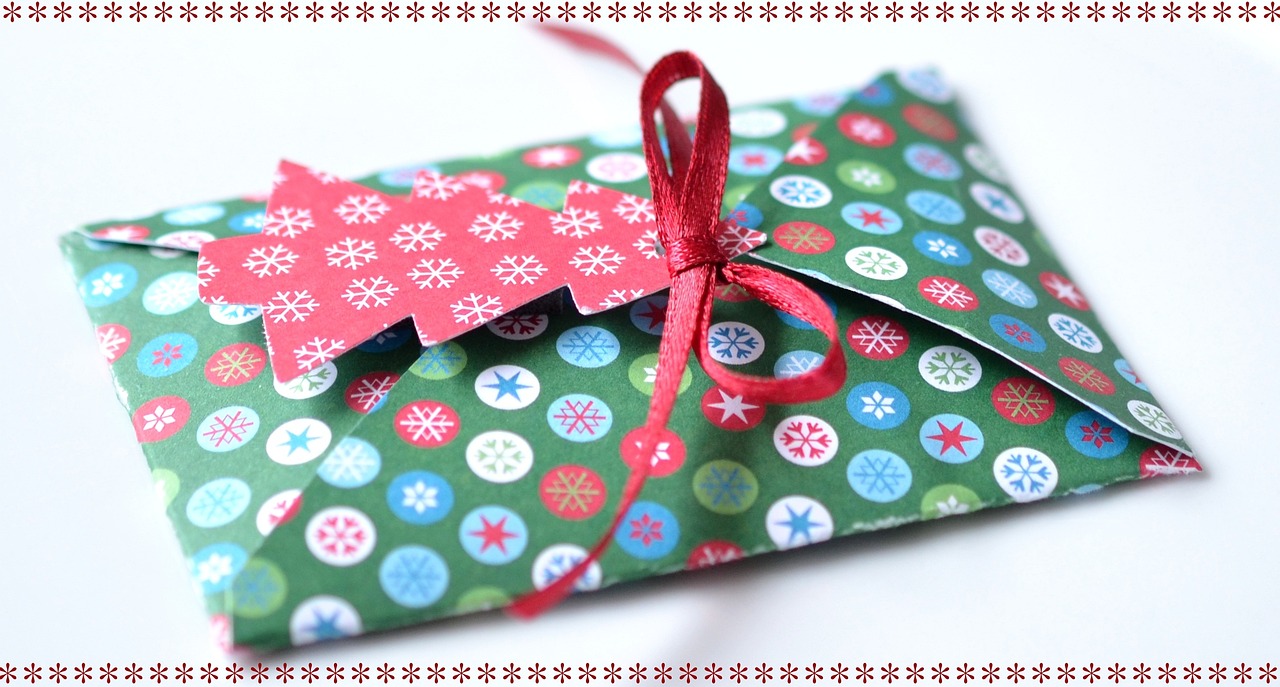
Crafting with Recyclables
When it comes to engaging kids in creative activities, is a fantastic way to spark their imagination while promoting environmental consciousness. Imagine turning a mundane cardboard box into a castle fit for a king or transforming empty plastic bottles into vibrant flower pots. The beauty of using recyclables is that they are not only readily available but also incredibly versatile, allowing for endless possibilities in crafting.
One of the most exciting aspects of crafting with recyclables is the opportunity for imaginative play. For instance, a simple paper towel roll can become a telescope for a space explorer, while old magazines can be cut up to create a colorful collage. This kind of crafting not only keeps children occupied but also teaches them the value of reusing materials. It’s like turning trash into treasure right before their eyes!
To get started, gather a variety of recyclable materials. Here’s a quick list of items you might consider:
- Cardboard boxes
- Plastic bottles
- Old newspapers and magazines
- Egg cartons
- Toilet paper rolls
- Glass jars
Once you have your materials ready, the real fun begins! You can encourage kids to think outside the box (literally) and come up with their own creations. For example, they can use cardboard to build a miniature city or create puppets from old socks. The possibilities are endless, and the best part is that each project can be a unique reflection of their creativity.
Moreover, crafting with recyclables can be a wonderful bonding experience. Set aside some time on a weekend or after school to sit down together and create. You can guide them through the process, but also allow them the freedom to explore their own ideas. This not only enhances their creative skills but also instills a sense of accomplishment when they see their finished projects.
For those looking for some structured project ideas, here are a few to consider:
- Cardboard Box Fort: Use large boxes to create a fort that kids can decorate and play in.
- Plastic Bottle Bird Feeders: Cut and decorate bottles to hang in the garden, attracting local wildlife.
- Egg Carton Caterpillars: Paint and connect egg cartons to make colorful caterpillar crafts.
As you embark on these crafting adventures, remember that the goal is not just to create something beautiful but also to have fun and learn along the way. Each project serves as a reminder that we can reduce waste and give new life to items that would otherwise end up in landfills. So gather those recyclables, unleash your creativity, and watch as your children turn everyday trash into extraordinary treasures!
Q: What types of materials are best for crafting with kids?
A: Some of the best materials include cardboard, plastic bottles, old newspapers, and egg cartons. These items are easy to manipulate and can be transformed into a variety of fun projects.
Q: How can I encourage my kids to be more creative with recyclables?
A: Encourage open-ended projects where they can use their imagination. Provide them with various materials and let them come up with their own ideas without strict guidelines.
Q: Are there any safety concerns when crafting with recyclables?
A: Always supervise younger children, especially when using scissors or sharp objects. Make sure to use non-toxic paints and glues to ensure a safe crafting environment.
Q: Can crafting with recyclables be educational?
A: Absolutely! It can teach children about sustainability, the importance of recycling, and even foster skills like problem-solving and critical thinking.
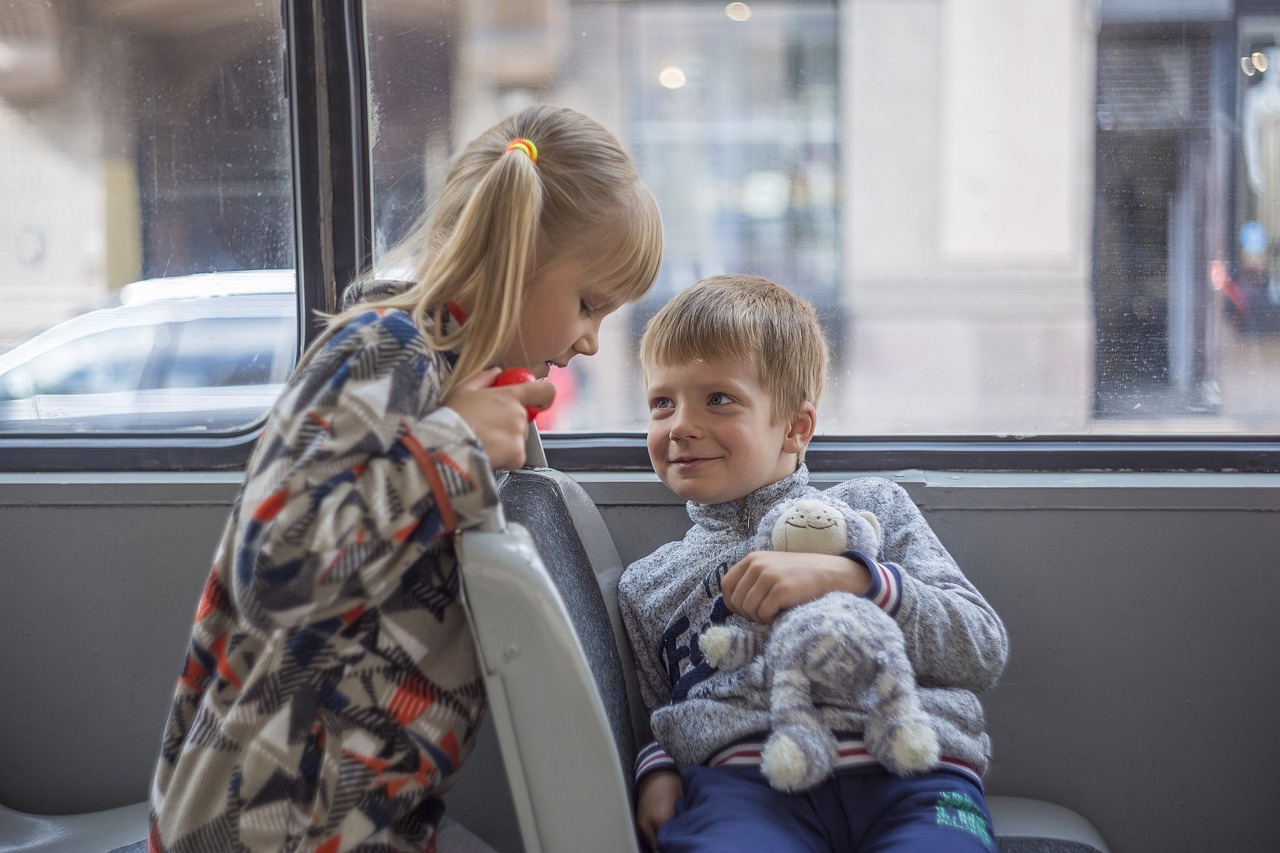
Upcycled Toys
Transforming everyday items into exciting toys is not just a creative outlet; it's a fantastic way to engage children’s imaginations while promoting sustainability. By using materials that would otherwise end up in the landfill, you can craft unique playthings that are not only fun but also eco-friendly. Imagine turning an old cardboard box into a spaceship or a set of bottle caps into colorful game pieces. The possibilities are endless, and the joy of creating something new from something old is incredibly rewarding.
One of the best things about upcycling toys is that it allows for personalization. Children can help in the process, making the toy truly theirs. For instance, you can take an old sock and turn it into a puppet. With a few stitches, some buttons for eyes, and a bit of fabric for a mouth, you’ve got a delightful puppet that can perform shows and tell stories. Not only does this activity spark creativity, but it also teaches kids about repurposing and the value of resources.
Here are some fun ideas to get you started on upcycling toys:
- Cardboard Creations: Use old boxes to build forts, cars, or even dollhouses. Let your kids decorate them with paint, markers, or stickers to add a personal touch.
- Bottle Cap Games: Gather bottle caps and create a fun board game. You can paint them in different colors and assign points, turning them into game pieces for a family game night.
- Fabric Scrap Stuffies: If you have leftover fabric, sew together some scraps to make soft toys or stuffed animals. Kids can choose their favorite colors and patterns, making each creation unique.
By engaging in these projects, children learn important lessons about resourcefulness and creativity. They see firsthand how waste can be transformed into something valuable and enjoyable. Plus, these upcycled toys often come with a story—each piece carries the memories of how it was made, making playtime even more special.
In addition to being environmentally friendly, upcycled toys can also be cost-effective. Instead of purchasing new toys that may only be played with a few times, you can create something that is both meaningful and memorable. This approach not only saves money but also encourages a mindset of sustainability and creativity in children.
So, gather those old materials and let your imagination run wild! Upcycling toys is not just about creating playthings; it’s about fostering a love for the planet and instilling values that children will carry with them for a lifetime.
Q: What types of materials can I use for upcycling toys?
A: You can use a variety of materials such as cardboard, plastic bottles, old clothes, and even kitchen utensils. The key is to think creatively about what you have on hand!
Q: Are upcycled toys safe for children?
A: Yes, as long as you use non-toxic materials and ensure that there are no sharp edges or small parts that could pose a choking hazard. Always supervise children during playtime.
Q: How can I get my kids involved in upcycling projects?
A: Encourage them to brainstorm ideas and let them take the lead in the creation process. This not only makes it more fun for them but also teaches them valuable skills in crafting and problem-solving.
Frequently Asked Questions
- What is upcycling, and how is it different from recycling?
Upcycling is the creative process of transforming waste materials or unwanted items into new products of better quality or environmental value. Unlike recycling, which breaks down materials to create new ones, upcycling retains the original item's form and enhances its value, making it a more sustainable option.
- Can I upcycle furniture without prior experience?
Absolutely! Upcycling furniture can be a fun and rewarding experience, even for beginners. Simple techniques like painting, sanding, or adding new hardware can dramatically change the look of an old piece. Start with small projects, and as you gain confidence, you can tackle more complex transformations!
- What are some easy DIY home decor projects I can try?
There are countless DIY home decor projects you can explore! Consider making upcycled wall art from old frames or fabric scraps, creating planters from tin cans, or using glass jars as decorative storage. The possibilities are endless, and you can personalize each project to match your style!
- How can I involve my kids in upcycling projects?
Engaging kids in upcycling is a fantastic way to foster creativity and teach them about sustainability. You can start with simple craft projects using recyclable materials, like making cardboard castles or bottle cap art. These activities not only spark their imagination but also instill valuable lessons about resourcefulness.
- What are some fashion upcycling ideas I can try at home?
If you're looking to refresh your wardrobe sustainably, consider patchwork clothing or redesigning old accessories. You can combine different fabric pieces to create unique garments or update jewelry and bags with new embellishments. It's a fun way to express your style while reducing textile waste!
- Is upcycling cost-effective?
Yes! Upcycling can save you money by giving new life to items you already own instead of buying new products. It allows you to create unique pieces without the hefty price tag, making it a budget-friendly and environmentally conscious choice.
- Where can I find inspiration for upcycling projects?
Inspiration for upcycling projects is everywhere! You can browse social media platforms like Pinterest and Instagram, check out DIY blogs, or even visit local craft stores for ideas. Additionally, keep an eye on your surroundings for items that could be transformed into something beautiful!



















